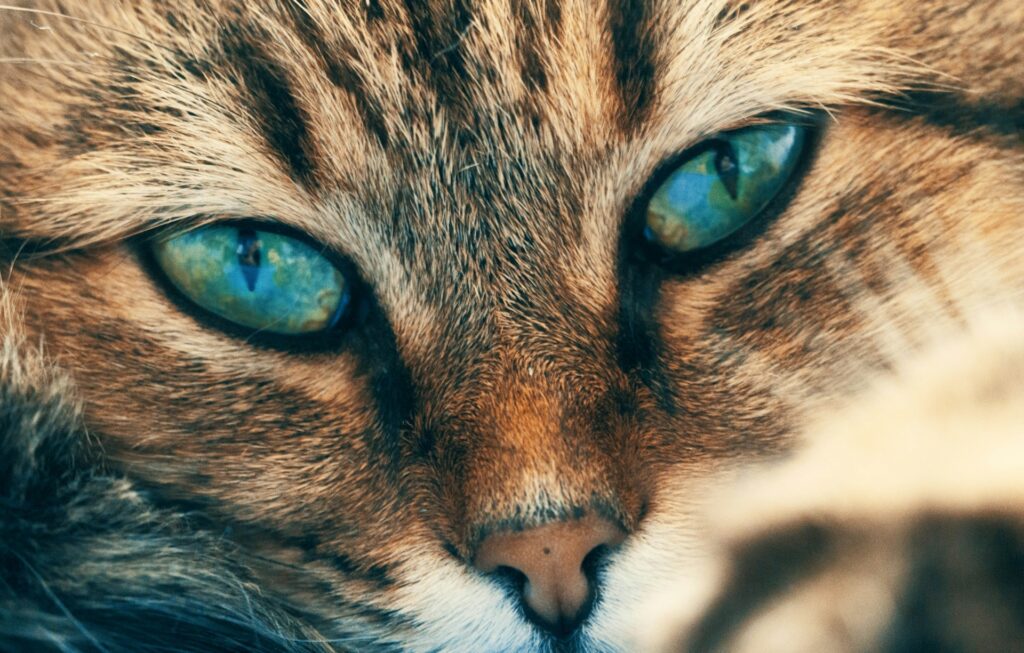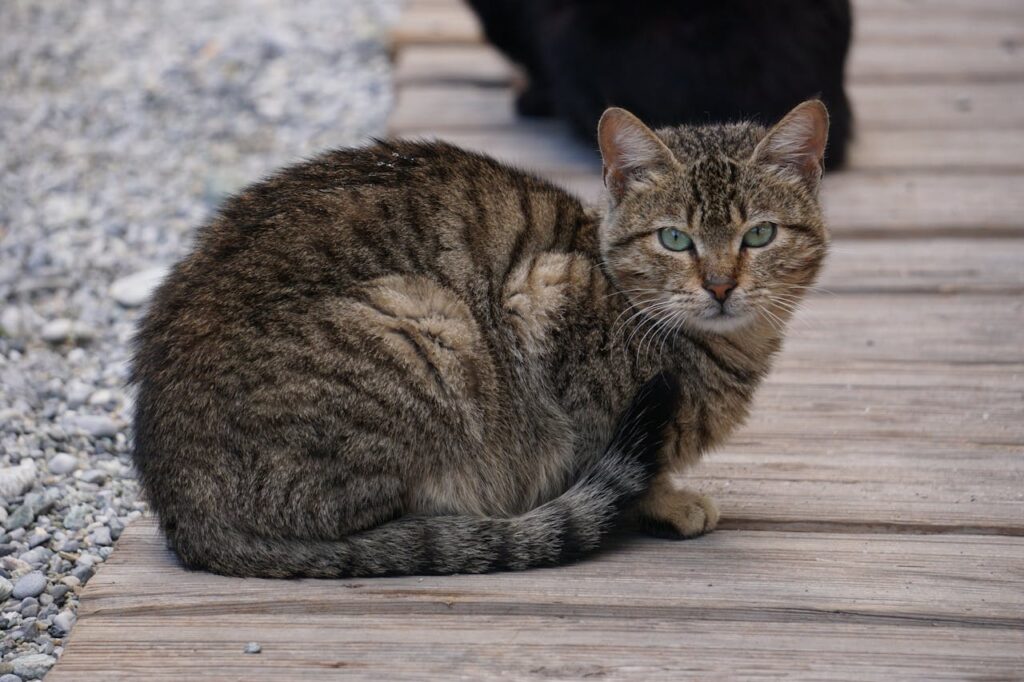How Cats Really See Us: Inside the Viral Feline Perception Simulation

There is a certain magic in the way cats look at us. Anyone who has ever lived with a cat knows the feeling of being stared at by those wide, unblinking eyes. Sometimes it feels affectionate, other times judgmental, and occasionally it feels like they are staring straight into our soul. Recently a new simulation based on real scientific data has revealed how cats actually see and hear humans. The results have left people amazed and in some cases a little unsettled.
This visual and audio reconstruction has gone viral across social platforms. According to coverage from many outlets, the project used a combination of feline vision models, auditory range mapping and behavioral studies. The goal was simple. Show humans what the world looks and sounds like when viewed through feline senses. It turns out the answer is stranger and far more fascinating than most people expect.
Experts from multiple research institutions shared that this type of simulation is possible thanks to decades of scientific work understanding how cats process light sound and movement. Publications such as Popular Science have previously broken down the mechanics of feline sight and hearing which helped form the foundation for this new viral simulation. The result is an immersive experience that makes people rethink what their pets perceive every day.
Below we explore the surprising findings behind the viral simulation the science behind it and what it means for your daily relationship with your cat. We break it down into clear sections each reflecting essential parts of feline perception.

How the Simulation Works
The simulation begins with a rendering of the world that dramatically alters brightness contrast and sharpness to mimic a cat’s visual processing. According to the breakdown, developers applied specialized filters to imitate the biological structure of feline eyes. Cats have more rod cells than humans which makes them exceptional at detecting movement and seeing in low light yet this comes at the cost of sharpness. The simulation reflects this by slightly blurring edges and reducing color saturation.
To add realism the creators integrated audio mapping derived from studies documenting feline hearing ranges. Cats can detect frequencies far higher than anything the human ear can perceive. This expanded auditory field is included in the simulation giving users an ethereal high pitched layer of background noise representing distant taps soft rustles and subtle electronic hums in the home.
Behaviorists also contributed to the simulation by studying how cats interpret human movement. In the final render human gestures appear more exaggerated since cats rely heavily on body language rather than facial details. As a result the simulated human figure may look familiar yet strangely alien which is exactly why online audiences have been so captivated.
To bring the experience together motion tracking technology was used to replicate how a cat’s head and eyes scan their surroundings. Cats naturally make rapid micro movements to track potential motion which is why the simulation may feel jittery or hyper focused. This represents an accurate depiction of how felines assess their environment especially when they are paying attention to a human.
What Cats Actually See When They Look at Us
When a cat looks at a human the simulation shows that our faces appear less detailed than we think. Popular Science notes that cats cannot see fine details clearly because their visual acuity is far lower than that of humans. Instead they perceive general shapes movements and contrasts. This explains why your cat may struggle to recognize you from far distances yet reacts instantly when you move your hand or raise an eyebrow.
The simulation presents humans with slightly washed out colors. This aligns with scientific findings showing that cats have limited color perception. They can see some hues particularly blues and yellows but reds and greens appear muted. In the simulation a human shirt that is brightly colored in real life becomes pale almost pastel like. This shift surprised many viewers since it challenges our assumptions about what cats find visually appealing.
@spacexphysics this is how cats see humans 😳 #cat #brain #vision #fyp
♬ Libets Delay by The Caretaker – Alt Tik Tok Sounds
Another striking detail is the enhanced brightness of dimly lit spaces. Cats evolved as crepuscular predators meaning they are most active during dawn and dusk. The simulation recreates this by brightening shadowed areas which may feel unnatural to human viewers but represents normal vision for cats. This part of the simulation intrigued scientists and pet owners alike especially because it helps explain why your cat confidently navigates a dark room.
Beyond colors and brightness the simulation also captures how emotionally expressive humans appear from a cat’s point of view. Behavioral experts told that cats rely more on tone posture and motion rather than facial cues. In the simulation human expressions seem subtle and secondary while gestures such as waving or leaning forward appear bold dramatic and attention grabbing.
The Science Behind Feline Hearing
Cats are known for having extraordinary hearing abilities and the simulation demonstrates this with remarkable accuracy. The audio track plays faint distant noises that humans normally filter out. According to Popular Science cats can hear up to 64000Hz which is far above the upper limit of human hearing. This means a cat can detect insects buzzing within walls small floorboard creaks and even subtle frequency shifts in household electronics.
The simulation amplified these high frequency tones to give viewers a sense of sensory overload which is something cats constantly experience but handle with ease. Many viewers reported that this part of the simulation was the most unsettling because it revealed just how noisy the average home environment really is.
Another interesting detail from the research integrated into the simulation is the directional sensitivity of feline ears. Cats can rotate their ears independently which helps them pinpoint the source of a sound with incredible accuracy. The simulation uses spatial audio effects to imitate this sensation. When a human speaks the sound is clearer yet accompanied by faint environmental noises from multiple directions.
Experts believe this heightened hearing explains many everyday cat behaviors. For example when your cat suddenly lifts its head and stares into the distance it is not acting randomly. It is reacting to sound cues humans cannot hear. The simulation successfully communicates this heightened perception helping viewers understand why cats appear mysterious or unpredictable.
Why the Simulation Went Viral
The simulation became a viral phenomenon because it taps into a universal curiosity. People love understanding the hidden experiences of the animals they live with. The clip gained millions of views within hours of posting. Many users commented that it made them rethink their interactions with their pets.
One major reason for the viral success is the emotional response it triggered. Seeing the world through a cat’s eyes created a new kind of empathy. People expressed awe and even guilt after realizing how much sensory input their cats deal with daily. Some viewers said they would start speaking more softly or moving more gently around their pets.

Another reason for its popularity is how visually compelling the simulation is. The shifting colors blurred details and heightened audio create an experience unlike typical online videos. It feels familiar yet unsettling which captures viewers attention. This contrast between ordinary life and alien perspective makes the content highly shareable.
FaithTopia also highlighted that viral animal content often succeeds when it reveals surprising science. The simulation does not merely entertain. It educates. Viewers learn about feline biology and behavior in a visually immersive way which encourages further discussion. Many people tagged friends asking if they had ever wondered what their cat sees when staring at them.
What This Means for Cat Owners
The simulation has real implications for how people care for their cats. Understanding feline perception helps owners create more comfortable environments. For example the simulation demonstrates how overwhelming noise can be for cats. Small changes such as turning down the volume on devices using softer tones or providing quiet spaces can dramatically improve a cat’s sense of security.
The visual insights from the simulation also encourage owners to reconsider how they interact physically. Cats interpret exaggerated gestures more intensely than subtle facial expressions. This means slow calm movements are more reassuring than rapid ones. When approaching a cat allowing them to see your hands and body language clearly can build trust.

Experts suggest that owners can use this information to design better home layouts. Since cats see well in low light and prefer elevated vantage points having dimly lit shelves or safe vertical spaces can enrich their environment. This can reduce stress and increase healthy activity.
The simulation also reminds owners that cats experience the world with a strong emphasis on movement. Toys that mimic prey movement patterns such as quick darts or gentle flutters will feel more natural and engaging for cats. Understanding how they process motion can lead to healthier play routines.
Simulation Changes Our Understanding
The viral simulation showing how cats see and hear the world has sparked global fascination because it blends scientific insight with immersive technology. It challenges long held assumptions about how cats perceive their environment and invites people to experience a version of reality that feels both familiar and foreign. By stepping into this reconstructed sensory world viewers begin to appreciate just how differently cats interpret the simplest moments of daily life.
This new perspective naturally deepens empathy. When people realize that cats navigate a world filled with blurred colors heightened sounds and dramatic gestures it becomes easier to understand their reactions and quirks. Behaviors that once felt mysterious such as sudden alertness or quiet withdrawal start to make sense. Many viewers find themselves feeling more patient and more attentive after understanding the sensory landscape their cats inhabit.
The greatest impact of the simulation may be its ability to inspire meaningful changes in how humans live alongside their pets. By showing that cats rely heavily on movement tone and environmental cues it encourages owners to communicate more thoughtfully and design spaces that feel safe and enriching. This shift in understanding turns everyday interactions into opportunities for connection and makes the relationship between humans and cats more considerate and emotionally informed.
Featured Image Credit: Courtesy of Jean-Francois Frenel | Pexels
Loading...

